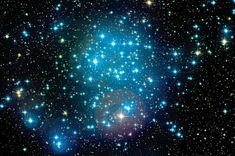NICER’s mirror assemblies gather data about the interior of neutron stars, including flashing pulsars from across the sky. For centuries, travelers have navigated by the stars. Now, a new experiment on the International Space Station shows how spacecraft to the outer solar system could one day use special pulsing stars for guidance. In a demonstration […]
Tag Archives | space.com
Brilliant Fireball Shakes Southeastern Michigan with 2.0 Earthquake
A brilliant fireball lit up the night sky over southern Michigan Tuesday (Jan. 16), dazzling skywatchers lucky enough to see it. Many more felt the earth shake from the meteor’s sonic boom, according to media reports. The meteor occurred at 8:10 p.m. CST and registered as a 2.0 magnitude earthquake, officials with the National Weather […]
'First to the Moon' Film Seeks Crowd Funds for Apollo 8 50th Anniversary Release
Director Paul Hildebrandt’s film, “First to the Moon: The Journey of Apollo 8,” marks the mission’s 50th anniversary in December 2018. A feature-length documentary about the first humans to fly to the moon needs the public’s help to be ready in time for the mission’s 50th anniversary in December. “First to the Moon: The Journey […]
How We Created a Mini 'Gamma Ray Burst' in the Lab for the First Time
Gamma-ray bursts are the most luminous explosions in the cosmos. This article was originally published at The Conversation. The publication contributed the article to Space.com’s Expert Voices: Op-Ed & Insights. Gamma ray bursts, intense explosions of light, are the brightest events ever observed in the universe – lasting no longer than seconds or minutes. Some […]

Space Fever in Astronauts Could Jeopardize Landing on Mars
Astronauts in space suffer from persistently elevated body temperature, which can reach up to 104 degrees Fahrenheit (40 degrees Celsius) when they exercise, a new study has found. The discovery raises concerns over the health effects of long-duration space missions, such as trips to Mars, as chronic fever could lead to many health problems and […]
Moon Rush: These Companies Have Big Plans for Lunar Exploration
An artist’s illustration of Astrobotic’s Peregrine lander on the surface of the moon. MOFFETT FIELD, Calif. — The moon may soon be a very busy place. A number of private companies and national governments are planning missions to the lunar surface in the next few years, and the spate of activity could lay the foundation […]
What Is the Biggest Thing in the Universe?
Scientists have created the first map of a colossal supercluster of galaxies known as Laniakea, the home of Earth’s Milky Way galaxy and many other. This computer simulation, a still from a Nature journal video, depicts the giant supercluster, with the Milky Way’s location shown as a red dot. In space, we’re used to dealing […]
Trash-Blasting Lasers Could Help Clean Up Space Junk, China Says
An artist’s rendering of Earth-mounted lasers sweeping space debris out of a satellite’s path. Far above your head right now, whizzing across the majestic canvas of space at 17,500 mph (28,200 km/h), is a load of garbage. More than 500,000 pieces of human-made debris — colloquially known as “space junk” — orbit the Earth at […]

Binary Star Systems: Classification and Evolution
In the binary system J0806, two white dwarf stars orbit one another every 321 seconds. Scientists think the stars, about 1,600 light-years away, are spiraling in toward one another and will eventually merge. More than four-fifths of the single points of light we observe in the night sky are actually two or more stars orbiting […]

J.J. Abrams Shopping Sci-Fi TV Space Show: Report
By George Marston, Newsarama Contributor | January 17, 2018 03:39pm ET J.J. Abrams reportedly has an idea for a new sci-fi TV show. Credit: Shutterstock Director J.J. Abrams is shopping a TV spec-script for a new sci-fi show set in space, according to The Hollywood Reporter . The script is said to focus on a girl […]
Earth Resides in Oddball Solar System, Alien Worlds Show
The Kepler-11 system has a sun-like star with six orbiting planets. Our solar system may be an oddball in the universe. A new study using data from NASA’s Kepler Space Telescope shows that in most cases, exoplanets orbiting the same star have similar sizes and regular spacing between their orbits. By contrast, our own solar […]
Get Ready for 2 Solar Eclipses Coming to the US in 2023 and 2024
It’s not too early to start getting ready for the next big solar eclipses coming to the U.S. in 2023 and 2024. NATIONAL HARBOR, Md. — It seems like it was just yesterday that the Great American Solar Eclipse of 2017 swept across the continental U.S., leaving millions of Americans in awe as the shadow […]
Lego Launches 'Moments in Space' Design Contest, Seeks Small Space Set Ideas
Lego’s “Moments in Space” contest seeks small space set ideas for a 2019 “gift with purchase” promotional giveaway. Lego is seeking ideas on how to give away some space. The Denmark-based toy company has launched its “Lego Moments in Space” design contest to find a small space exploration-themed set to become a promotional “gift with […]